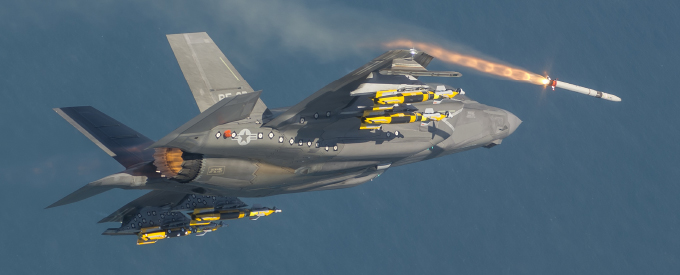2023-12-10
Lockheed Takes F-35 Pilot Training to Next Level
Lockheed Martin, a global leader in aerospace and defence technologies, has unveiled a transformative approach to F-35 pilot training, setting a new standard for aviator readiness and mission effectiveness.
This initiative aligns with the company’s commitment to its 21st Century Security vision, ensuring that the world’s most advanced fighter jet remains in the hands of the most skilled aviators.
Becoming an F-35 pilot is an arduous and demanding undertaking, reserved for the exceptional aviators in the military. These elite individuals undergo a rigorous training curriculum that encompasses simulated events designed to replicate real-world scenarios.
This immersive training ensures that pilots are prepared for any mission, at any time, under any circumstance.
To outpace evolving threats, Lockheed Martin has implemented transformative enhancements in three key areas of the F-35 pilot training programme: concurrence, simulated threat environment, and sustainment.
Pilot Proficiency Precision
Advanced threats demand advanced training. Lockheed Martin collaborates globally, understanding upcoming mission needs and tailoring scenarios for pilot training. The F-35 sits at the core of the 21st Century Security vision, knitting together joint force capabilities for mission-centric defence. Operators must navigate diverse threats, requiring comprehensive readiness for their missions. Training simulates these challenges, honing pilot skills for proficient and safe execution.
The company implements training enhancements, keeping F-35 pilots ahead and confident in the cockpit.
Simulator First
F-35 pilots undergo rigorous training in a full mission simulator mirroring the jet’s tech and controls. This method enables familiarisation and skill-building in a low-pressure setting before taking to the skies. Lockheed Martin, in coordination with the Joint Programme Office and F-35 operators, maintains synchronisation between the jet and simulator. Current software alignment ensures smoother transitions, enhancing pilots’ mission execution safety and efficiency.
Training Complexity
Mastering the F-35 Lightning II demands top-tier skills. Lockheed Martin understands the complexity of training pilots and maintainers. The F-35 Pilot and Maintenance Training systems fuse various media for a comprehensive educational approach tailored to this modern weapon system.
Pilot education commences in classrooms, utilising aids and interactive modules for foundational skills.
Advancing to the F-35 Full Mission Simulator, with a 360-degree visual display mirroring sensors and weapons, pilots hone their abilities, working on identical software as in the aircraft.
The Full Mission Simulator cockpit can be reconfigured to support training on all three F-35 variants. Pilots complete roughly half of initial qualification flights in the Full Mission Simulator for affordability and effectiveness.
After graduation, they remain in a continuous learning environment with access to training courseware, applications and mission rehearsal trainers to boost skill proficiency and combat readiness.
Qualified F-35 pilots engage in continuation, upgrade, and mission rehearsal training. The high fidelity of the F-35 Full Mission Simulator enables a near 50/50 split between aircraft and simulator training for cost efficiency.
Three training devices are available: the primary Full Mission Simulator (FMS) offers high fidelity. The Deployable Mission Rehearsal Trainer (DMRT) serves aircraft carriers and austere sites. The Mission Rehearsal Trainer (MRT) shares hardware/software with the FMS but has a limited visual system.
A library of high-fidelity maintenance trainers catapults traditional learning into the 21st century, empowering F-35 maintainers with comprehensive insight and crucial hands-on experience. These trainers facilitate critical tasks unavailable on live airplanes, offering a holistic understanding of duties.
Technology, unimaginable a decade ago, now serves the entire F-35 enterprise, including the aircraft system maintenance trainer, vital for initial qualification.
Realistic specialty trainers allow technicians to practice loading weapons, servicing ejection seats, and maintaining landing gear. The bulk of training spans computer-based courses and simulator-driven hands-on exercises across maintainer disciplines, reducing aircraft usage for live flights.
Tiered Approach
The growing need for trained pilots in both commercial and military sectors drives Lockheed Martin’s investment in maintaining fidelity while reducing sustainment costs and space requirements.
F-35 pilot training spans various devices, from desktop trainers for basics to full mission simulators replicating actual jet functions. This tiered approach enables progressive training and skill development, bolstering mission capacity.
With investments Lockheed Martin has made to technologies such as the AMAZE visual display system, the same level and fidelity of training will be conducted with reduced overall sustainment costs and needs, meaning the focus is on training rather than maintaining the training system.


No Comments